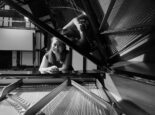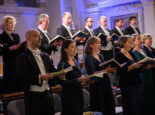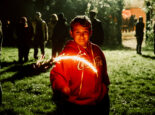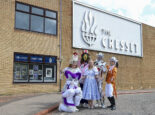Tony Nero
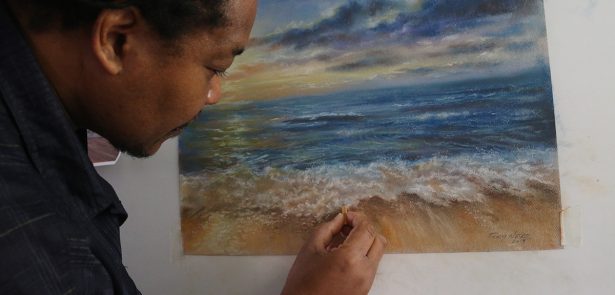
Born in St Vincent and raised in London, Tony Nero has become one of the most familiar names on the Peterborough arts scene. Combining traditional fine art skills with a steady work ethic, he’s not only established himself as one of the city’s most significant art assets, he also works tirelessly to promote the city and its arts in general – as a tutor, as an active member of Peterborough Artists Open Studios and as a supporter of a number of local and national causes. Moment editor Toby Venables talked to him about how he got here, and where he hopes to go next.
Let’s start with where you are now… Many people might not consider COVID as having a big impact on artists, because they can still do their art. What has been the impact on you?
Well, I teach as well, so when it hit the very first time I started panicking, because suddenly I was no longer a tutor in a college. All my evening tuitions – all closed. And that’s my main source of regular income. I was like, ‘Crikey, what am I going to do?’ And then, as usual, my practicality kicked in. It has to, or you go a bit crazy. So I thought ‘OK, just be calm – you can work something out…’ And during those first couple of weeks, while all the frustration and worry was happening, I was flicking through Instagram and I saw that an artist had started this initiative: The Artist Support Pledge. How that works is that each artist who takes part sells any of their pieces for under £200. Then, when you get to £1000, you pledge to buy from another artist at the value of £200. And I thought, ‘OK, well, this sounds alright – I’ve got nothing else to do! I’ve got loads of paintings about, so why not try to get rid of some?’ And then I thought ‘No… You know what? Let’s paint some new stuff…’ So I actually created a whole batch of new pieces – about five or so – and sold them all for £200 pounds a pop. And then I actually bought from another artist as well. What that did for me was give me a focus, something to think about and to focus on. And it also managed to earn me something, so that was really good for me mentally.
Also during that time I did a lot of walking outside, taking a lot of photographs. I kept posting them online, and what I found was that this was inspiring other people, and supporting other people who couldn’t maybe get out. So that had a positive impact. And what I found last year, when everything lifted a little bit, people were so relieved, glad to get out and do things, that a lot of work was coming my way. Because there were a lot of people who were online more, I had a few commissions. People were buying more online. So it opened up a whole new way of looking at things, and a different way of working. It also freed up some time to think about other ways of being creative. So, it was actually quite interesting. I suppose it’s easy to get negative, because it has been a hard time for so many people, but it turned out to be a good time to get creative as well. We need to create a new normal out of that, you know, to take some of the positive and good things out of what happened.
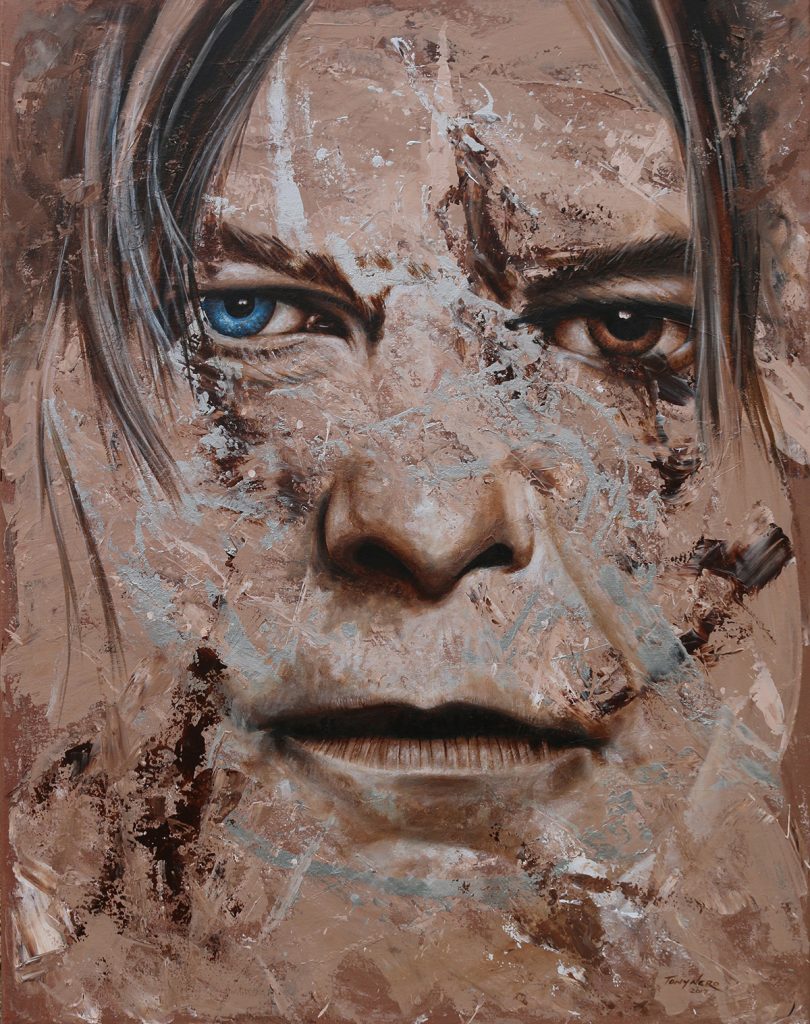
You send out regular emails highlighting new work that you’ve done and I get the sense that you’re something of a grafter – a person who likes to keep busy. Are you a quite a disciplined worker?
I would say I am, but sometimes I do procrastinate, because as an artist you do anyway! I am a very positive person, and I do like to just get up and get on with stuff. When one thing’s done I’ve gone on to the next thing already. So, I suppose yeah, disciplined in a way. But at the same time, I want to say, there’s still the arty side which is a little bit chilled as well!
You started as a graphic designer in London, which obviously is a nine to five job. Did that establish a sort of work ethic?
I think it did. Originally, I was meant to goto uni to be a fashion designer, but while I was waiting to go to uni I got a job working at my friend’s uncle’s printing firm as a graphic designer. So when it was time to go to uni, I was like ‘Hey, I’m getting money. I’m in my teens. I can go out, buy clothes…’ And I didn’t go. My mum nearly killed me! So, I was a graphic designer, and I stayed with the company for 17 years. That was in Stoke Newington, Dalston, around that area. After that, I moved on and I set up my own graphic company in Walthamstow – East London – which I ran for 10 years. And I think that is what actually gave me that discipline. You know, you’re out there, meeting deadlines, meeting clients on time. I think that helps me now in my art, because it means I know exactly how to discipline myself, I know how to push myself.
You seem to produce a lot – do you have many paintings around the place?
Oh, my gosh, yes… I’m actually now in a one- bedroom flat, and the best way to explain it is that sometimes I can’t get into the flat! There are paintings leaning up everywhere. Even where my clothes should be in the wardrobe, there’s some in there. So it’s no longer really a one bedroom flat. It’s more like a studio!
What made you decide to become an artist, and also make the move to Peterborough?
I think I’ve always wanted to be an artist. But I think when you’re at school, back in those days anyway, your career advisors would say it was too competitive – you know, the usual sort of thing. So I thought I’d be a fashion designer, then had the opportunity to be a graphic designer, and that meant that I parked the idea of being an artist. When I closed down the company that I was running, it was mainly because I had so much money owing to me, from all over the world. I used to design record sleeves and stuff like that, but I’d had lots of losses and went through the mill, and
I just got disillusioned with business. I’d had enough. When I came to Peterborough, it could have been anywhere. I could have literally taken a dart and thrown it at the map – but I happened to have an auntie and some cousins in Peterborough, and as a kid I used to come and spend holidays with my cousins here. So I just thought ‘Why not Peterborough?’ Then I literally just started looking for some work. I got two part-time jobs: one was working for a local charity as a graphic designer again, and the other was working at the passport office. So I did that for quite some time.
How did you make the transition from that to full-time artist?
I spent about three years talking about this amazing exhibition that I was going to have and, eventually, my manager at the charity said to me ‘You keep talking about this bloody exhibition; when are you going to have it?’ I realised then I didn’t even have any work! So I started producing work – just doing anything. I did that for about three years. And I remember one of my colleagues at the charity said something to me that really stuck in my head. I kept talking about going back to London to try and be an artist, and she said ‘Why are you trying to break into London? Why don’t you try and develop yourself in Peterborough and then see where it goes from there?’ I thought that was a good idea. So, then I had my very first exhibition here in Peterborough in 2008, with the help of friends and colleagues from the passport office. They helped me to set up the exhibition, helped me promote it. It almost left me in tears, to be honest, the way everyone sort of rallied around. I just remember that so vividly. And that was the beginning of things.
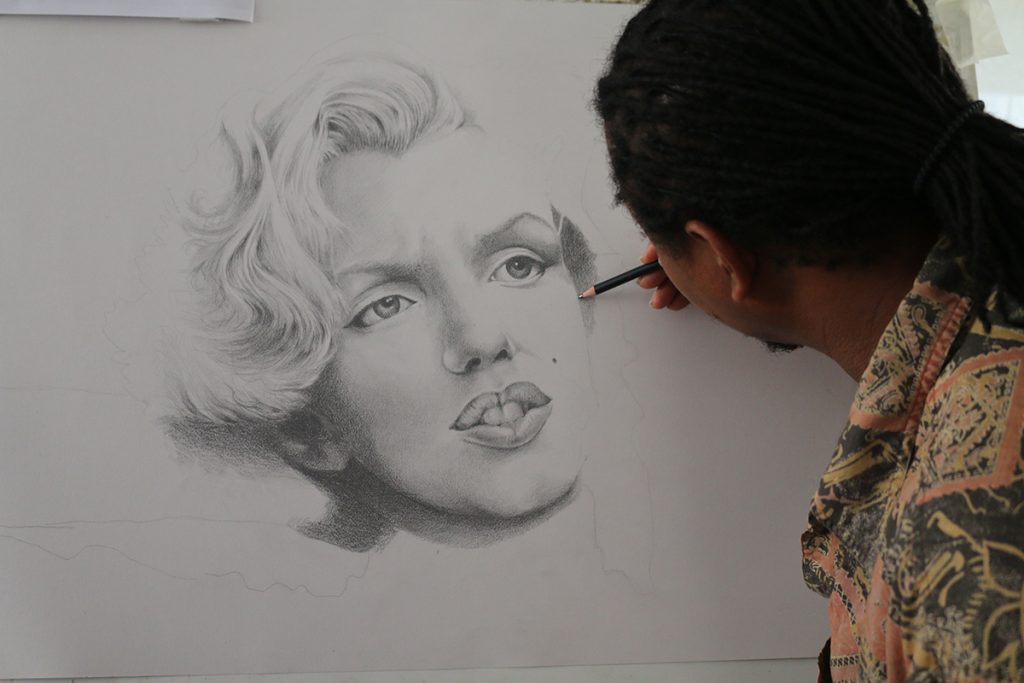
Taking the plunge is a big step – but establishing yourself and keeping going, that must be harder still…
It really is. It’s a continuous battle to try and get people to buy your work. The first thing you want to do as an artist is produce art. But you can’t just be an artist, you also have to be a businessman or businesswoman. You have to learn to talk about your work, you have to learn to push your work. But that’s what’s so good about the internet. Back in the day, when I started as a graphic designer and ran my own business, we had to pay for advertising in newspapers and magazines and as a small company, it was always very difficult to have a budget to promote your work. As an artist now, with social media – Instagram, Facebook and so on – it’s so much easier. It’s such a great thing for helping artists to produce their work and promote their work. But you do have to be consistently talking about your work, pushing your work, trying to sell your work.
You’re an artist who uses quite traditional skills, and in recent years you’ve started passing on that knowledge through teaching. How and why did that come about?
I never really wanted to be a teacher. My mum always said to me ‘Oh, why don’t you teach?’ but all I really wanted to do was produce the work. Over the years, a few people had asked me about doing lessons, but I always put it off. Then, a few years ago, a good friend and artist colleague, Charron Pugsley Hill, said ‘I’ve got someone who has asked me about lessons. Would you like to take it on and help her for exams?’ And finally I decided, ‘OK, since I’m trying to work as a self-employed artist now, let me take this on…’ And as I started teaching this young girl, other parents started asking and it developed from there. I started tutoring in the evenings, because that’s easier for school kids, and over the last couple of years I’ve built it up a bit. Also, during that time, another artist friend, Kathryn Parsons who was tutoring at City College, said to me ‘Would you like to take on my oil painting class?’ I had a chat with the college, and they not only offered me the oil painting class, but a second class as well, Painting for Pleasure. I’ve now got two classes on a Monday, and hoping to extend to two classes on Friday, also. That’s been so interesting, having to teach, thinking ‘How do I teach someone what I’ve got in my head? How do I explain to someone, or show someone how to do it in a way that they can understand?’ So I’ve actually learned a lot over the last few years, working with the kids. I’ve got into it so much now, I wouldn’t want to be without it. It really helps you to look at your practice and think about what you’re doing, and why you do it. And when you see a young person try something they’ve never done before, and surprise themselves at how well they do, that’s really inspiring.
You’ve always been a real champion for Peterborough and its culture. What do you see for its future?
There’s a lot of us here who are very passionate about Peterborough, and who want to see the city thrive. Peterborough Artists Open Studios started about 20 years ago, and it was started by two artists. Now we’ve got over 100 members, and it keeps growing. And that’s only just some of the artists; we’ve still got all the street artists as well. But we have a lot of young artists who come along, and then want to leave the city, because they feel like there’s nothing here for them, asking ‘What can we do? Where can we go?’ There’s quite a few of us here in Peterborough who have the same conversations all the time, and would love to see more happen for the arts in Peterborough so that the young people don’t have to leave. It would be great if we had that buzz where people wanted to be here, wanted to do things, and really wanted to develop the city.
There’s still a lot of people who don’t know about Peterborough Artists Open Studios, even though we do so much in the city and try to be as visual as possible. One of the things we do suffer from in the city is not having a single platform or place where people can find out what’s happening. We’ve tried in so many different ways and we’ve got different things – Love Peterborough, Peterborough Matters, Creative Peterborough, Metal and yourselves at The Moment. So we do try. But wouldn’t it be great if there was one platform where people could easily get all that information?
Your Black Heroes portraits series has become well known as a project, but what other directions do you want to go in from here?
Black Heroes portraits is something that will keep growing. But mainly I just want to keep practising and keep developing my art. I aim to keep developing all the time. One of the directions that I’ve been thinking about recently has come from talking to some of the street art guys – my good friend Lee Mason, Process Smith and some of the other guys who are doing some amazing things with NFTs [Non-Fungible Tokens – a new way of producing unique, digital versions of artworks that cannot be duplicated]. NFT art is something I have been thinking about trying to dabble in a little bit. And I’m going in that direction. As things change, and technology changes, you’ve got to try and embrace that.










